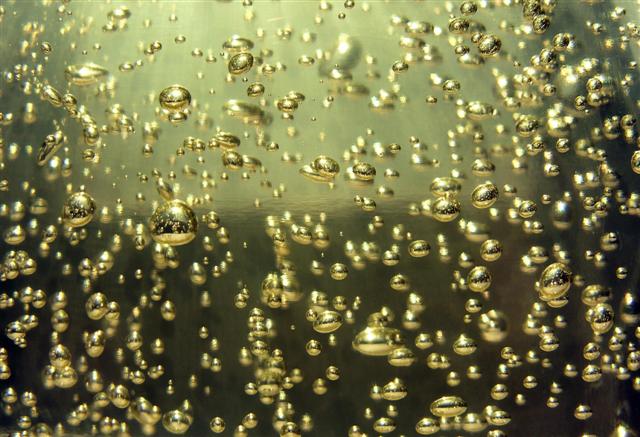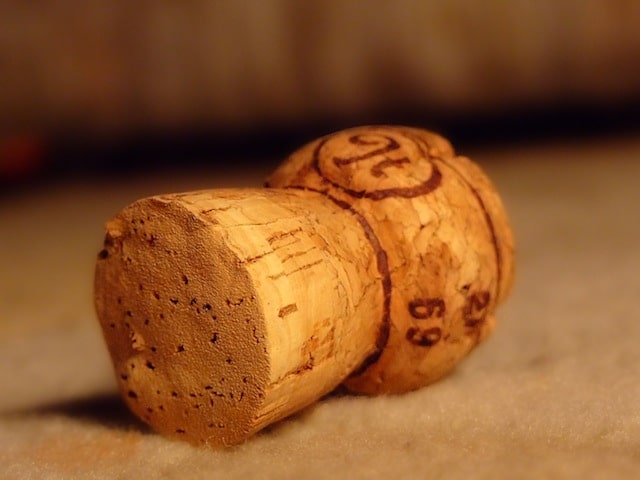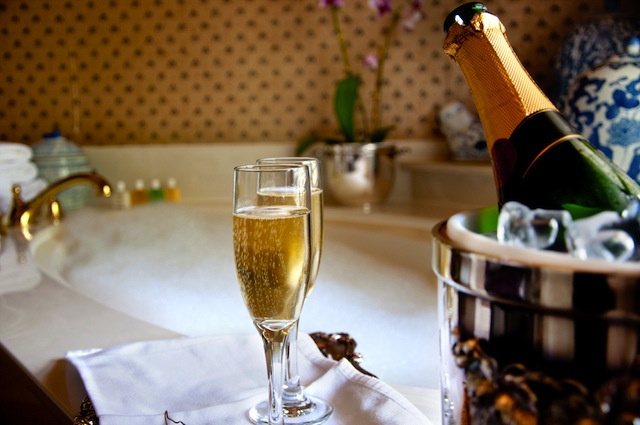
While many bubbly libations mimic the effervescent feel and zippy taste of Champagne, only those made in France’s Champagne region can truly be called Champagne. Just because Champagnes are all from the same region, however, does not mean they all taste the same. Like wine, a large vocabulary is used to describe a particular label, like yeasty, dry, fruity, toasty, crisp, lively, luxurious, silky, delicate, rich and more. And that’s not even getting into the complex aromas and flavors, which range from floral to candied fruit to coffee, almonds and smoked meat.
Terminology
Along with adjectives used to describe the aromas and flavors of Champagne, there are some standard terms which are important to understand before choosing your bottle. You’ll often see the word “brut,” on the label, which means the Champagne contains less than 15 grams of residual sugar per liter. Other common vocabulary words includes:
- Extra Brut: Slightly drier than brut, with less than six grams of residual sugar per liter.
- Brut Zero/Non Dosed/Brut Natural: This bone dry wine has no added residual sugar; however, it can be difficult to find in shops.
- Extra Dry: Not as dry as brut, but still dry with a hint of sweetness. This type of Champagne makes for a great aperitif.
- Sec or Demi-Sec: These wines have 32 to 50 grams of residual sugar per liter. These are moderately sweet and pair well with desserts.
- Doux: Containing more than 50 grams of residual sugar per liter, this is the sweetest Champagne on the market. It’s basically a dessert in itself.

Image via dmy
Choosing A Champagne
Remember, just because a particular bottle is pricier than another doesn’t mean it’s necessarily better. The price is dependent on how rare a vintage is. You will, however, want to think about vintage when choosing a bottle. Champagne develops bolder aromas over time. It is considered a vintage Champagne when it is made from top-quality grapes grown in one single, successful season. From there, it is aged longer than a non-vintage Champagne, typically three-to-five years; however, the more luxurious cuvees and tete de cuvees are aged six-to-seven years before being sold. For the most part, the longer the Champagne is aged, the more flavorful and refined it will be.
Vintage Champagnes are pricier due to the fact they’re limited edition because they come from only one growing season. Because of this you can do a little research from the facts on the bottle. When you look at the label of a vintage Champagne it will have the year on it, and you can look up the characteristics of that growing season to help you make your choice.
That being said, there are some great non-vintage Champagnes on the market. These Champagnes are a blend of wines from different years. It’s more common and less expensive than the vintage Champagnes. Good non-vintage Champagnes are aged two-to-three years; however, there are Champagnes that are aged for shorter periods of time.
Moreover, everyone’s taste buds are different, and what you’re eating or have already eaten will affect the drink’s flavor. Generally, the more crisp and lively varieties pair well with a greater variety of foods. To judge how fine a Champagne is, first take note of what the bubbles do when you’re pouring. A quality Champagne will have trails of tiny bubbles forming all the way to glass’s top instead of simply clinging to the sides.
And of course, remember the occasion you’re celebrating. If you’re having a party with friends where you’ll be going through many bottles — a typical bottle serves five or six glasses — don’t buy the most expensive choice; however, if you’re meeting with someone you really want to impress, splurging on a rare vintage may be a good idea.

Image via egomedia
Storing & Serving
Champagne should be kept in a cool, dark place, as it’s served chilled but not iced. The younger and more lively Champagnes should be stored at 46.4 degrees Fahrenheit, while more mature and vintage Champagnes should be stored at 50 degrees Fahrenheit. When you’re ready to drink it, chill it on ice. A trick to chilling Champagne quickly is to fill a wine bucket with 50% water and 50% ice, placing in the Champagne bottle and turning it every four minutes. It will be chilled in about eight minutes. And remember, if you chill it, drink it. Champagne does not respond well to fluctuations in temperature.
As for what to serve Champagne in, this is up for debate. Champagne experts have long touted the Champagne flute as the best piece of stemware as it allows drinkers to perfectly see the bubbles trickle up the sides; however, many are now opting for white wine glasses in order to allow the aroma and richness of the Champagne to really shine. If you are going to opt for the traditional flute, make sure the glass is only 1/3 full to allow the Champagne to breathe.
And if you want to do as the French, remember it is customary in France to look a person in the eye when toasting them and to clink glasses with each person without crossing arms with anyone.

Image via theswedish
Recommendations
For something affordable, we like the Charles Heidsieck Brut Reserve, which sells for around $35 and is a great aperetif wine featuring tastes of dried apple, red berries and biscuits with a spine of crisp acidity. Additionally, the Philipponnat Reserve Rosee delivers a dry yet fruity flavor with tastes of strawberries, candied mandarin oranges and red currants that go well with smoked meats and fish. You can buy a bottle for about $50. We also like the Bollinger “Special Cuvee” Brut for around $55, as it’s elegant with flavors of green apple, brioche and a bit of citrus.
For those looking for an enjoyable yet affordable vintage, the 1998 Cuvee Louise Brut from Champagne Pommery is delicious and sells for about $185. It’s subtle and elegant, with a palate of yeast, citrus and tart green apple. And for the ultimate splurge, Krug Clos D’Ambonnay 1996 is a powerful and intense wine showcasing layers of grilled nuts, smoked meats and citrus. You better enjoy it, however, as the price tag is about $2,250.
Top Image via brainloc
Do you have a favorite Champagne or Champagne tip? Let us know in the comments below.

Jessica Festa is the editor of the travel sites Jessie on a Journey (http://jessieonajourney.com) and Epicure & Culture (http://epicureandculture.com). Along with blogging at We Blog The World, her byline has appeared in publications like Huffington Post, Gadling, Fodor’s, Travel + Escape, Matador, Viator, The Culture-Ist and many others. After getting her BA/MA in Communication from the State University of New York at Albany, she realized she wasn’t really to stop backpacking and made travel her full time job. Some of her most memorable experiences include studying abroad in Sydney, teaching English in Thailand, doing orphanage work in Ghana, hiking her way through South America and traveling solo through Europe. She has a passion for backpacking, adventure, hiking, wine and getting off the beaten path.








